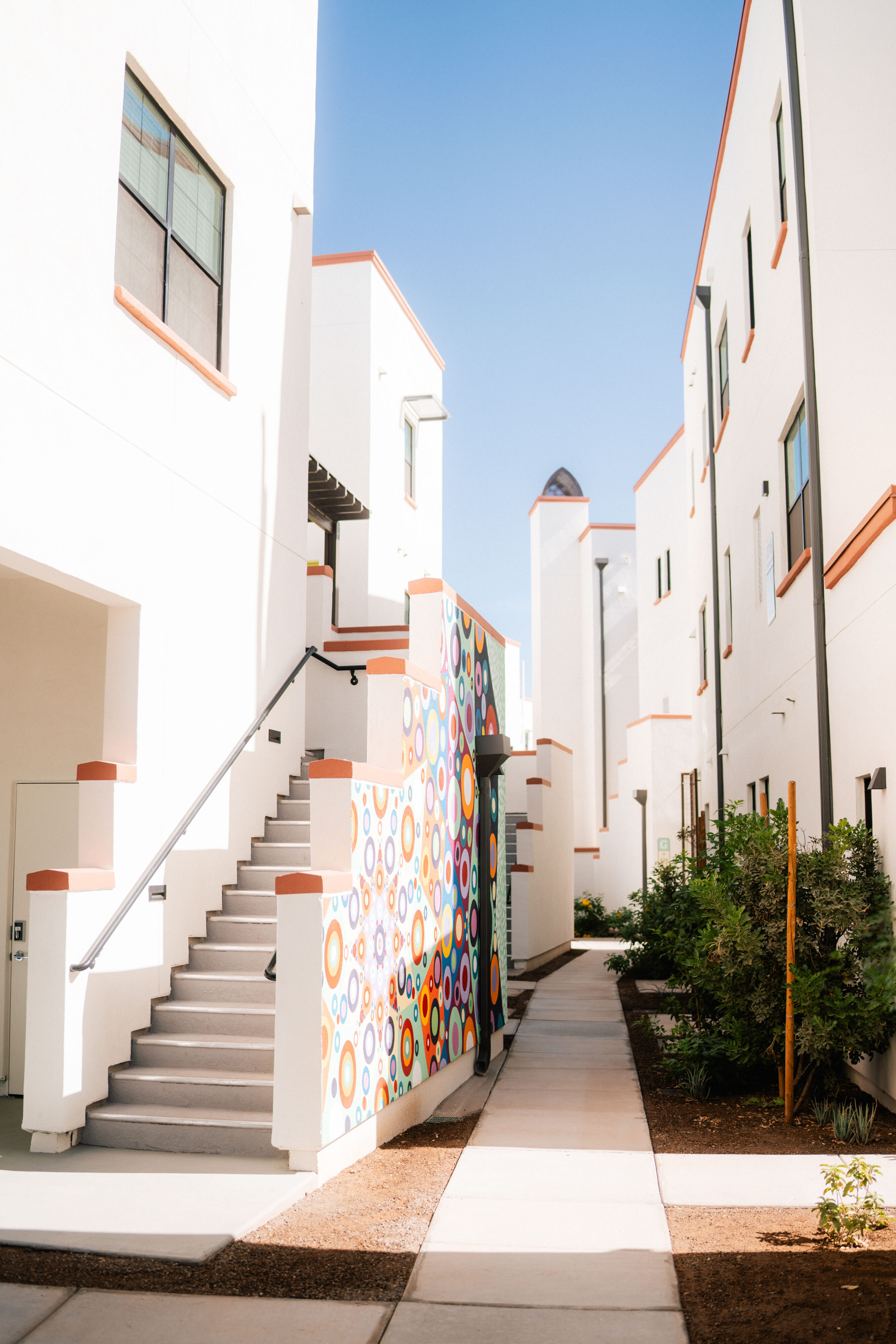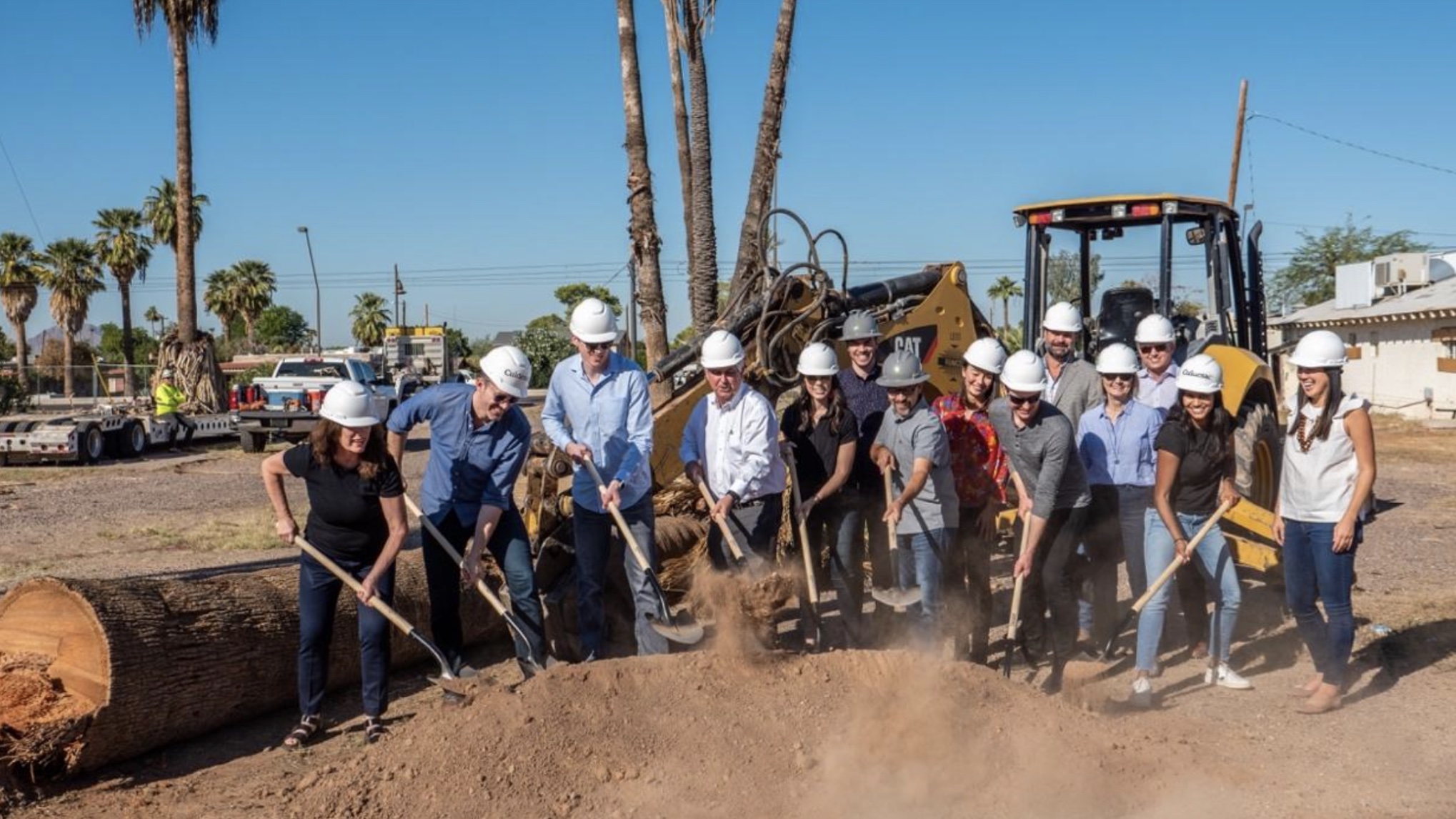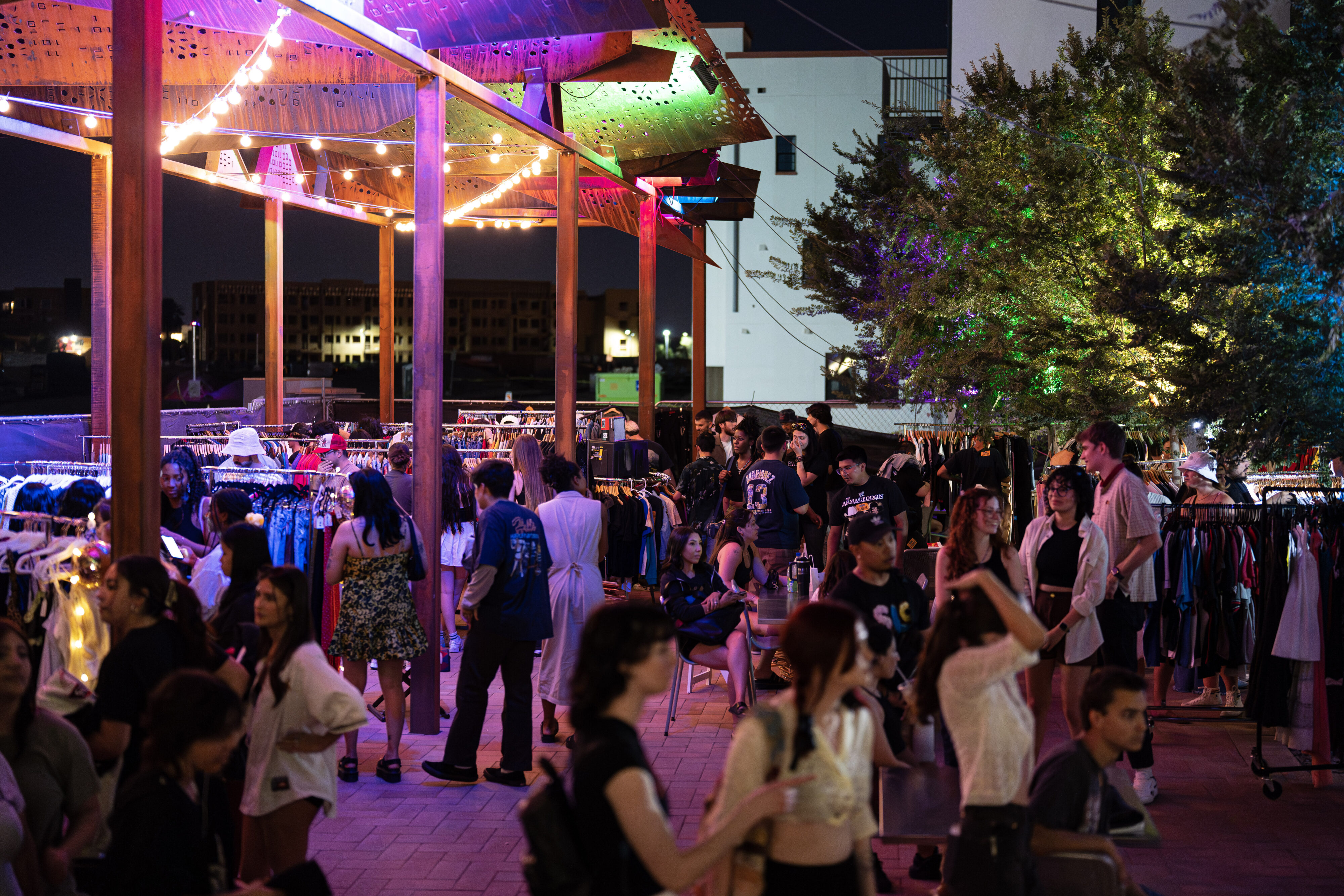
Vince Dickson

Vince Dickson
It’s hard to imagine a modern neighborhood without cars. Or a city without parking lots. Instead of rolling through a Starbucks drive-thru on a 45-minute commute to work, imagine walking 50 feet to the neighborhood café while wearing pajamas. In a community without roads or garages, neighbors connect through shared walking spaces and European-style plazas.
In Tempe, Arizona, a team of developers envisioned exactly this as they built Culdesac. The six-acre residential community is filled with coworking spaces, local shops, backyard parks and plazas, small businesses, and transit alternatives such as electric bikes and ride shares. Promoted as the “five-minute city,” the neighborhood houses over 100 residents in a 760-apartment complex with no residential parking. Culdesac offers one-to three-bedroom apartments costing $1400 to $3200 per month. The neighborhood formally opened in May 2023.
Culdesac may be the first of many car-free neighborhoods. Its construction is timely, its developers say, as the United States grapples with road congestion and carbon emissions from the transportation sector. The transportation sector alone is a major source of greenhouse gas emission in the US and accounts for more than half of nitrogen oxides in our air, according to EPA data. Amid high costs of living driven up by parking lot construction, the question of whether to own a car at all has become a prominent dilemma for new city-dwellers. In three weeks, nearly 2,000 people signed up for Culdesac’s interest list.

The Culdesac team is building what members call “missing middle housing.” Missing middle housing entails neither single-family homes nor tall apartment buildings – it’s somewhere in between. This semi-dense, walkable urban living is “missing” since there’s not a lot of it on the market. “We’re building the kind of housing most Americans are looking for,” said Ryan Johnson, co-founder and CEO of Culdesac.
But is the United States ready for missing middle housing?
The Culdesac team would like to see more of it. However, the answer depends on each city’s level of readiness to ensure a comfortable transition. Key factors include whether a neighborhood is close to a light rail or other public transit, as well as ensuring a robust selection of backup transit options such as discounted Lyft rides, free e-bikes, and diverse micro-retailers to choose from.
“Zero residential parking” has a daunting ring to many policymakers. The Culdesac team had to work closely with local government officials in Tempe to achieve that goal while also planning to prevent congestion and navigating zoning regulations. The careful planning process was a time-consuming but not insurmountable challenge for Tempe, and local officials were cooperative. (According to Johnson, Tempe’s Mayor now dines at Culdesac’s Cocina Chiwas restaurant nearly every week.)

A growing number of Americans are receptive to a car-free lifestyle. Over 53% of Americans want to live in walkable neighborhoods – but only 8% do. Walkability is an important factor in community living – a 2020 survey from the National Association of Realtors found that people with a place to walk in their community continue to be the most satisfied with their quality of life. Many Americans instead satiate their walkability cravings by vacationing to the cobblestone streets and greenery of European villages, only to return a week later to a starkly individualistic lifestyle centered around highway commuting.

The very luxuries Americans seek out on vacations can be built into our working lives; for example, green space. When developers don’t have to plan (or pay) for parking lots, roads, and driveways, budgets for gardens, walkways, and patches of green space can rise in priority.
Tempe’s car-free community offers three times the average amount of green space seen in typical developments, according to Culdesac. This model of living is speaking to some people loudly in the wake of the pandemic, when work-life expectations have shifted dramatically toward remote work.
In addition to the cultural elements of walkability and green space, price is a factor that heavily influences tenants’ decision to go car-free. Not only are cars and gasoline expensive but, providing parking drives up costs for developers. Even a surface parking space costs $20,000 to $30,000, said David King, an associate professor of urban planning at Arizona State University. These lots accumulate financial, social, and aesthetic costs. “Essentially, we require cities to build ample parking in these places where people want to go, and it diminishes the built environment – it makes it dry,” King explains. “If you have to cross the parking lot, that lot separates you from everything you want to do.”
Culdesac is evaluating new site locations across the country. The claim that Tempe, Arizona is home to the first car-free community of its kind in the United States is a stimulating one — but is more complicated when we consider urban design historically, said King.
“Certainly, it’s very unique now,” said King, noting Culdesac is “harking back closer to the way we used to build things 100 years ago. I think we need more of this.”
Geographically, the Culdesac model of living is much more popular outside of the United States. Founders of Culdesac were inspired by walkable neighborhoods in Europe, Africa, and Latin America. Some intentional car-free projects have had positive impacts on air quality—including a 40% reduction in NO2 levels on car-free days—and getting people moving, which is good for health. A rising number of cities are trying their hand at the car-free model. In Freiburg, Germany, for example, a ban on cars in the center city increased bike use and decreased traffic and air pollution, while other projects, like Google’s Sidewalk Labs in Toronto, have fallen short with an overload of sustainability requirements.
Johnson and his team consider Culdesac a “reference project” for cities built for people in the 2020s. “To be honest, we’re not sure if future cities will ever be completely car-free,” said Johnson. “We’re not necessarily ‘anti-car’ but rather, we’re against our cities’ dependency on private cars.”
Whether or not the 21st century will be defined as a post-car era, Culdesac could be one of the first communities to break the cultural mold of car dependency. If successful, the United States may see an upsurge in neighborhoods seeking mobility, community, and the symbolic quietude of a car-free cul-de-sac.